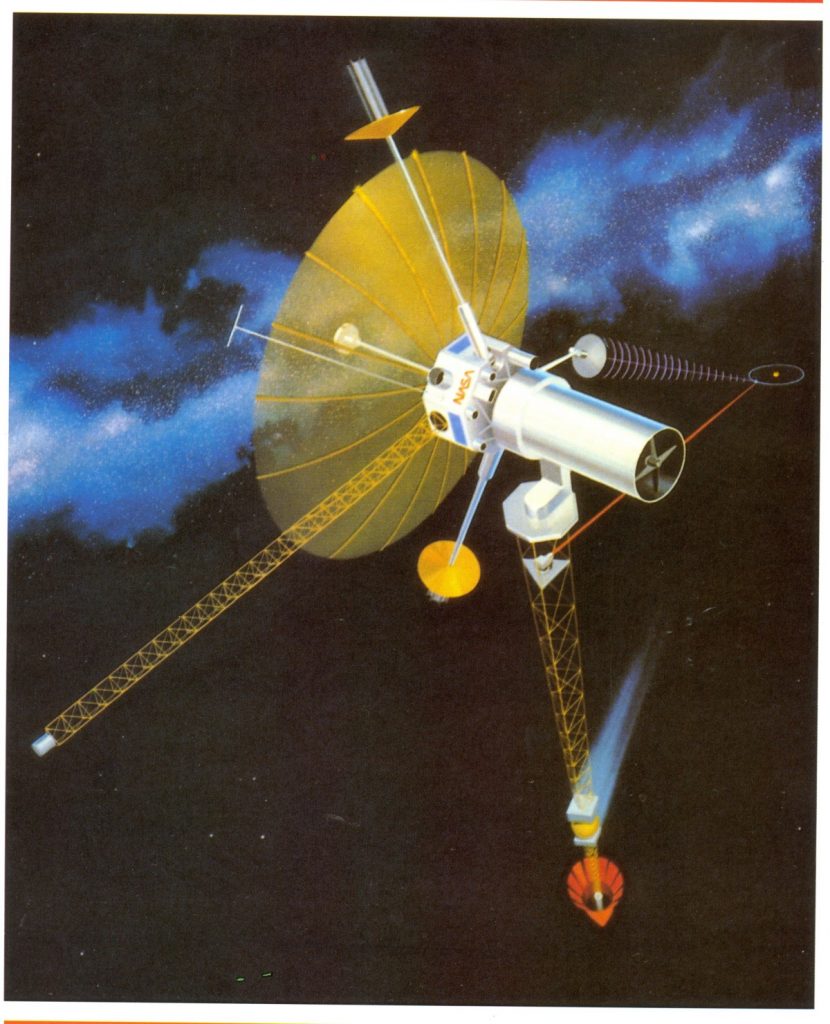Starting in the 1970s and running through much of the 1980’s, the Jet Propulsion Laboratory ran numerous studies of Thousand Astronomical Unit (TAU) spacecraft. These were somewhat akin to Voyager class probes, but with important differences. instead of small RTGs for power, they would use SP-100 class fission reactors, mounted many dozens of meters away at the end of long booms. Located at the center of mass of the system would be a bank of ion engines; the nuclear electric propulsion system would operate for *years* to boost these craft to extremely high speeds. Still, it would take decades for them to travel 1,000 AU from the Sun, many times further than Pluto. There, large optical telescopes would take parallax measurements on distant stars; by positioning numerous TAU craft in every direction, the measurement baseline would be vast, and precise distance fixes could be made for stars on the other side of the galaxy.
A number of TAU designs were examined, but the one shown here in JPL art seems to be pretty representative. These probes would have to be engineered with a high degree of both reliability and autonomy as their main observation missions would only begin something like 50 years after launch. Diagrams of a different design and more information were presented in US Spacecraft Projects #3.
